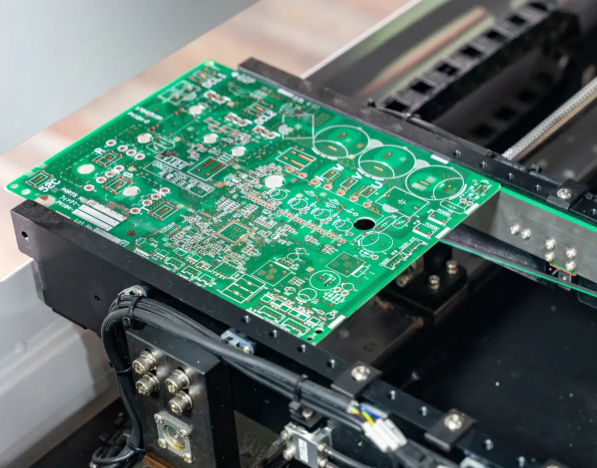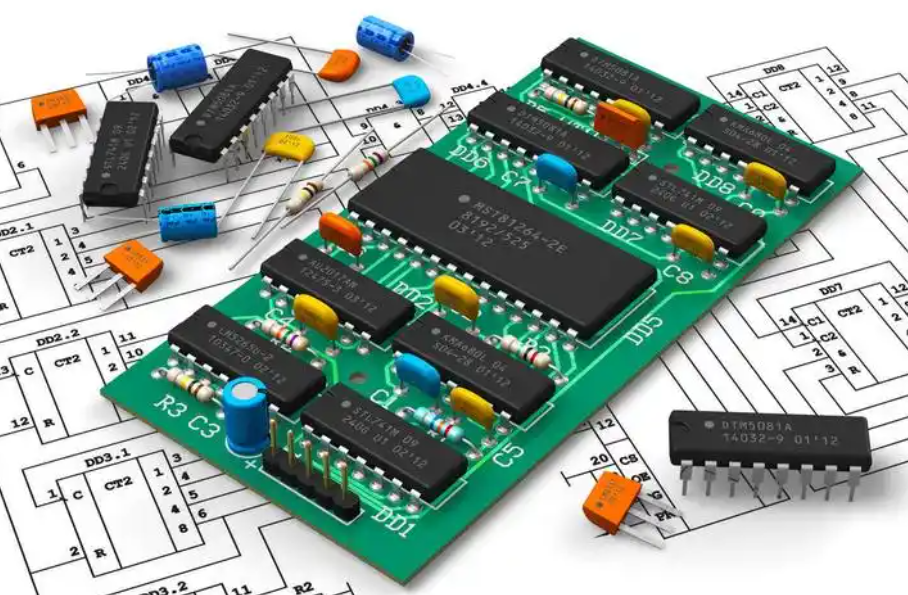Storage Environment of Electronic Components: A Comprehensive Guide
Introduction
The performance, reliability, and longevity of electronic components are intrinsically linked to the conditions in which they are stored. An improper storage environment of electronic components can lead to catastrophic failures, reduced operational life, and significant financial losses. As technology advances and components become more sophisticated and sensitive, the need for meticulous environmental control has never been more critical. This article delves into the essential factors that define an optimal storage environment, outlining best practices to mitigate risks and preserve the integrity of these vital parts. For professionals seeking specialized solutions, platforms like ICGOODFIND offer invaluable resources and access to components handled with the utmost care for storage and shipping.

The Critical Factors of an Optimal Storage Environment
Creating the ideal storage conditions is a science that involves controlling several interdependent variables. Neglecting any single factor can compromise the entire inventory.
1. Temperature and Humidity Control
This is the cornerstone of effective electronic component storage. The primary enemy is moisture, which can lead to a multitude of issues.
- Moisture Sensitivity: Most modern integrated circuits (ICs) and other components are packaged in materials that are hygroscopic, meaning they absorb moisture from the air. When a damp component undergoes the high heat of soldering during PCB assembly, the trapped moisture rapidly expands into steam. This pressure can cause internal delamination, cracking, or “popcorning,” irreparably damaging the silicon die and package. This is quantified by the Moisture Sensitivity Level (MSL), a rating that dictates how long a component can be exposed to ambient air before it must be baked to remove moisture.
- Optimal Ranges: The generally accepted standard for long-term storage is to maintain a temperature below 30°C (86°F) and relative humidity between 40% and 60%. This range effectively prevents excessive moisture absorption while avoiding an atmosphere that is too dry, which can promote the buildup of static electricity. For highly sensitive components, stricter controls are necessary.
- Mitigation Strategies: The use of dry cabinets or dry storage rooms with dedicated dehumidifiers is non-negotiable for professional operations. These units maintain a precise humidity level, often as low as % RH for moisture-sensitive devices (MSDs). Components delivered in moisture-barrier bags (MBBs) with desiccant should remain sealed until immediately before use.
2. Contamination and Cleanliness
Electronic components are highly susceptible to damage from particulate and chemical contamination.
- Dust and Particulates: Dust accumulation on contacts and pins can lead to poor electrical connectivity, signal interference, and overheating. In humid conditions, dust can combine with moisture to form a corrosive layer on metal surfaces.
- Chemical Contaminants: Airborne pollutants like sulfur, chlorine, and other industrial chemicals can cause severe corrosion on silver, copper, and other metal leads and terminations. This slowly degrades conductivity and can lead to open circuits.
- Mitigation Strategies: Storage areas must be cleanrooms or sealed enclosures with positive air pressure to prevent unfiltered air from entering. High-Efficiency Particulate Air (HEPA) filtration systems are recommended to remove airborne particles. Furthermore, prohibiting food, drinks, and any non-essential chemicals from the storage area is a fundamental rule.
3. Electrostatic Discharge (ESD) Protection
Perhaps the most insidious threat is Electrostatic Discharge (ESD), a sudden flow of electricity between two electrically charged objects. ESD can occur without any visible or audible sign yet can instantly destroy a sensitive semiconductor.
- The Threat: A static shock that is imperceptible to a human (as low as 30 volts) can easily vaporize the microscopic pathways inside a modern IC. This damage can be catastrophic (immediate failure) or latent (a weakened component that fails prematurely in the field).
- Mitigation Strategies: A comprehensive ESD Protected Area (EPA) is essential. This involves:
- Conductive Flooring and Work Benches: Grounded to safely dissipate charges.
- Personal Grounding: All personnel must wear properly grounded ESD wrist straps and heel straps.
- Proper Packaging: Components must be stored and transported in static-shielding bags (metallic pink or silver bags), not anti-static alone. Conductive foam is also used for storing leads.
- Humidity Control: As mentioned, maintaining adequate humidity (>40% RH) helps reduce the generation of static charge.
Best Practices for Managing the Storage Environment
Understanding the factors is one thing; implementing a robust management system is another.
1. Proper Packaging and Handling
The first line of defense is how components are packaged upon arrival and handled within the facility.
- Moisture Barrier Bags (MBBs): Always inspect incoming shipments. MBBs should be intact with humidity indicator cards showing a safe dry state (often blue). Do not break the seal unless you are ready to use the components.
- ESD-Safe Procedures: Establish strict protocols for handling components outside of their protective packaging. Use ESD-safe trays and containers. Never touch component pins or leads directly with bare hands, as oils and salts from skin can cause corrosion.
2. Environmental Monitoring and Documentation
You cannot control what you do not measure. Passive management is insufficient.
- Continuous Monitoring: Install digital data loggers throughout the storage facility to continuously track temperature and humidity. These devices should have alarms to alert staff immediately if parameters drift outside predefined thresholds.
- Audit Trails: Maintain logs of environmental conditions. This documentation is crucial for quality assurance, troubleshooting future failures, and complying with industry standards like ISO 9001 or IECQ QC 080000.
3. Inventory Management: FIFO and Shelf Life
The age of components matters. Even in perfect conditions, some components have a finite shelf life.
- First-In, First-Out (FIFO): Implement a strict FIFO inventory system. This ensures that older stock is used before newer stock, preventing components from degrading over extended periods.
- Understanding Shelf Life: While many semiconductors can last for years if stored properly, certain components like electrolytic capacitors can degrade as their electrolyte dries out. Know the recommended shelf life for different component types in your inventory.
Conclusion
The storage environment of electronic components is not merely a matter of convenience but a fundamental aspect of quality control and risk management in electronics manufacturing and distribution. By rigorously controlling temperature, humidity, contamination, and electrostatic discharge, businesses can safeguard their valuable inventory against premature failure and ensure end-product reliability. This commitment to preservation translates directly into enhanced customer satisfaction, reduced warranty claims, and a stronger brand reputation. Sourcing from reputable partners who prioritize these principles is equally important. Platforms that understand these critical needs, such as ICGOODFIND, provide assurance that components have been handled correctly throughout the supply chain, from their origin to your doorstep.








